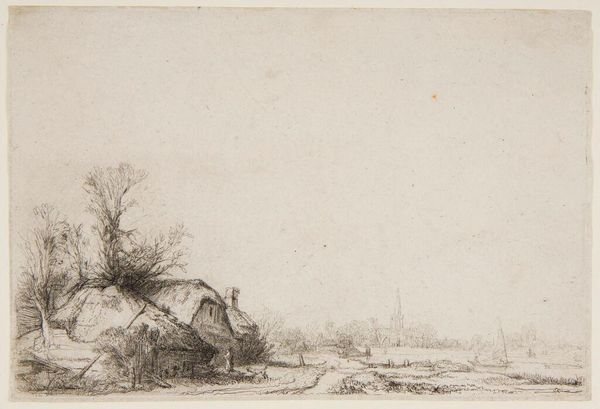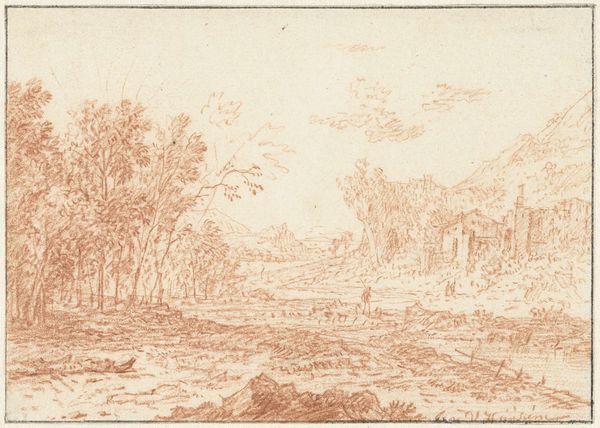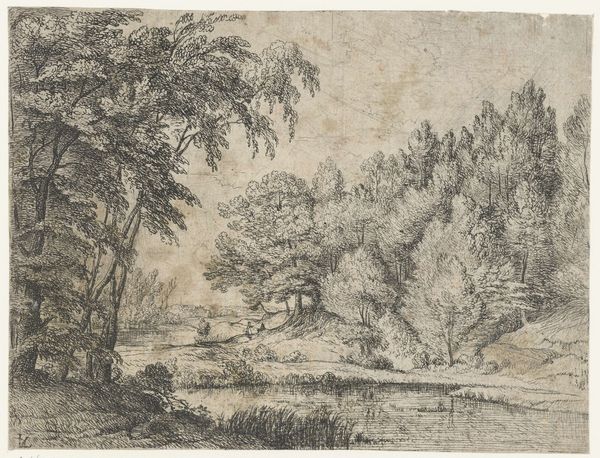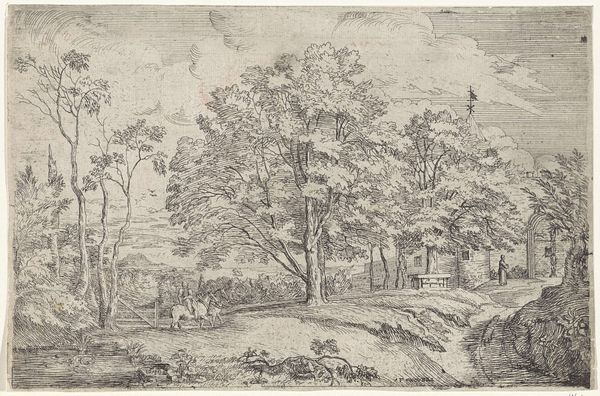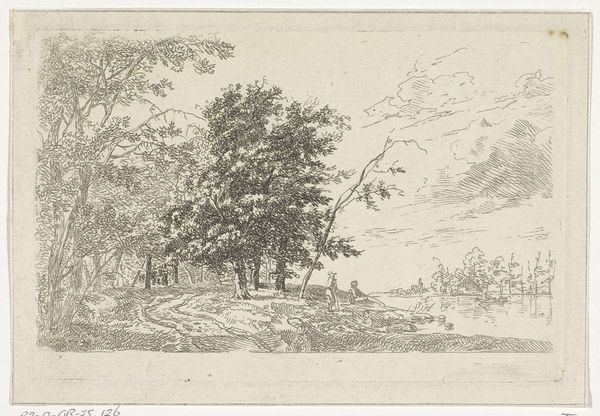
drawing, ink, pencil, pen
#
landscape illustration sketch
#
drawing
#
light pencil work
#
quirky sketch
#
pen sketch
#
pencil sketch
#
landscape
#
personal sketchbook
#
ink
#
romanticism
#
pen-ink sketch
#
pencil
#
pen work
#
sketchbook drawing
#
pen
#
initial sketch
Dimensions: height 74 mm, width 132 mm
Copyright: Rijks Museum: Open Domain
This etching, "Landschap met boerderij," was created by Jan Baptiste de Jonghe, a Flemish artist, around 1815. The print was made by coating a metal plate with wax, drawing through it with a sharp needle, and then immersing the plate in acid, which bites away at the exposed lines. The resulting image captures a rural scene, likely somewhere in the Low Countries, with meticulous details, from the thatched roof of the farmhouse to the individual leaves on the trees. Etching as a medium was particularly well-suited to this kind of close observation. It allowed artists to create multiple, identical copies of their work, making art more accessible to a wider audience. The act of printing inherently democratizes art, disseminating images far beyond the circles of elite patronage, and the final print can be appreciated for its material qualities, its subtle tonality, and its capacity to bring the countryside into the urban collector's home.
Comments
No comments
Be the first to comment and join the conversation on the ultimate creative platform.






